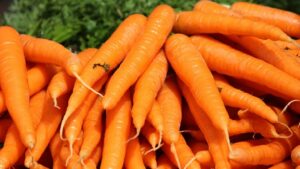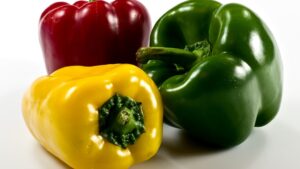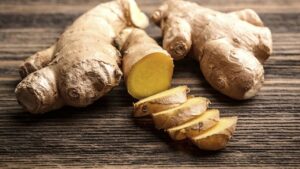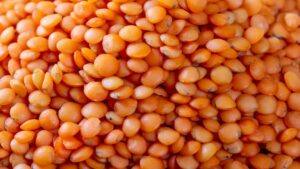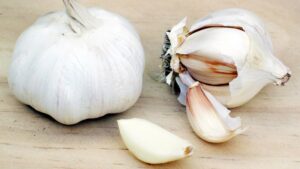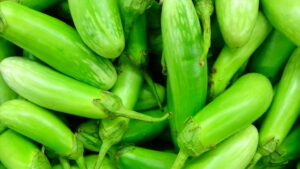Name an Indian curry, bhuna or gravy dish and you will find onion as a common thread running through them. It is one of the basic ingredients in any rich Indian recipe, especially non-veg ones.
Onion brings a unique aroma, flavour and texture to a normal dish and makes it extremely delicious.
If it comes to colours, onions are available in three varieties – red, yellow and white. Depending on colours, onions lend a different taste to a recipe.
Unoi, a Latin word, is what the word onion has originated from. Unoi means one or single. Onion comes as a single bulb that offers a tight texture of multiple ordered and individual layers.
Yellow onion offers a tangy sweet flavour and finds a greater use in French side dishes and soups. Red onions are mostly used for charbroiling and grilling whereas white onions are more common in traditional gravy and bhuna preparations.
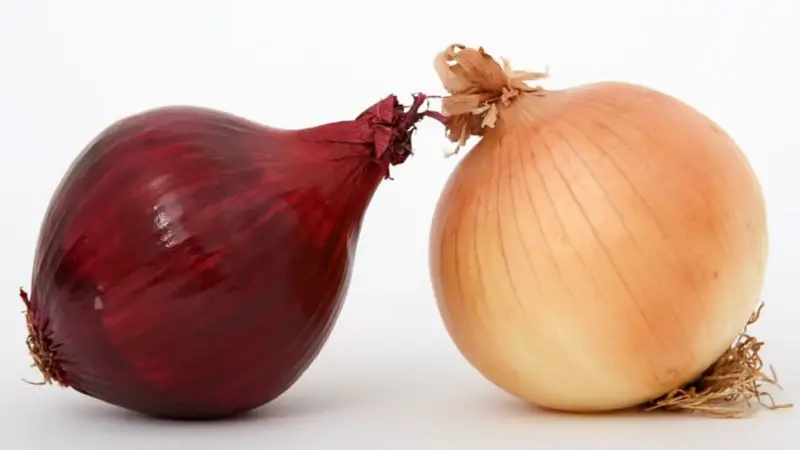
Uses of Onion in Bengali & Indian Cooking
Cutting onions brings tears to eyes. However, anyone will admit onions make a full-of-flavours addition to Indian cooking.
Just try any of your favourite non-veg dishes without onion and you will realize how this pungent vegetable should get the respect that it deserves.
However, onion is hardly a hero, rather appears as a character artiste or sometimes, makes a guest appearance. Regardless of how it is used, onion never fails to add the pizzaz and punch.
It does dhamaal with its two loyal companions, ginger and garlic. The trio do a flavourful disco together and make an empowering and overpowering combination for any preparation.
Onion, garlic and ginger are three musketeers. Whether pasted or finely or coarsely chopped, they drum up magic together. But onion can be a host in itself.
It shows the power of its flavour punch even when used alone. Think about crispy ring onion fries with smoking tea or coffee. “Yeh, dil mange more” – don’t you feel like screaming it?
Bongs and fried snacks are almost synonymous with each other. None appreciate aloor chop and pyaji like them.
Succulent, sliced onions are dipped in a batter of spicy besan and deep fried. The crispy fritters are then served with mint chutney.
Fried items, with chatpata masala sprinkled all over them, make a great accompaniment with coffee or tea any evening, whether it rains or not.
How would papri chaat or bhel puri taste without onions? Definitely not the familiar lip-smacking kind that you love so much!
The same rings true for chole bhature or ghugni. The rings of fresh, raw onions make the dish more teasing. Without those pinky white petals, these delicacies would suddenly look like being washed off colours.
Onion makes its way to spicy recipes of cholar dal or matar dal. It has its pompous presence in tadka too. It works as a flavour enhancer. Jackfruit is lovingly called gachpatha in Bengal.
Jackfruit curry without onion loses its rich, royal aroma. When used raw, it brings the bites in salads and fried pakoras and if chopped or grated, onion thickens texture and jazzes up flavours.
Let’s now talk about colourful and flavourful curries. Think about dimer kasha sans onions and you will turn your nose without even giving it a try.
And then, coming in the line are chicken and mutton preparations. Without onion, they will be reduced to “not that kind I used to savour a lot’ type of things.
Onions, often underrated or taken for granted, always do the super cool kind of things to take the flavours up.
Eggs do pyaza – the name drops a hint. How can you think of it without onions? And then rezala -. a handful of ingredients, easy to cook, high on flavours!
Would it have tasted rich and royal without onion? No way. Biryani without onion? It’s just like a day without the sun.
Whether raw onion pulp for meat marinade, chopped onion to make curry or deep fried onion sprinkled all over your biryani plate, it does its job to perfection and that is to up the magic.
Onion is also used to make spicy achar and sauce. Another lesser heard recipe is onion halwa. India is truly a desh of halwai.
They are the carigors (craftsmen) who can cook divine sweet delicacies with almost any ingredient. If you wonder if it reeks of an overpowering flavour of onion, give it a try and I bet you will come in for some good surprises.
Lastly, India shares a love-hate relationship with onions. It is the star performer in Punjabi and Sindhi cuisines. Bongs are also ardent admirers of this succulent, savoury vegetable.
However, it does not get a welcome gesture from many Gujrati and Marwari foodies. Onion is a fat favourite for the Delhiwalas as they are more in favour of Mughlai khana-khazana.
If we look at the religion-wise demographic constituents of India’s population, onions are very common in Muslim households. They use it in almost any preparation, veg or non-veg.
Not all Hindus eat onions and those, who do, adopt a limited use. Almost all non-veg recipes and certain veg dishes use onion. Many Buddhists, Jains and Vaishanavs avoid onions.
What is the Best Way to Sauté Onions?
Add butter to a pan and allow it to melt over medium-low heat. Add onion slices, stir them a little and put a lid on the pan.
After 10-15 minutes, the onion will become tender and translucent. Occasional stirring is recommended.
Uncover the pan, stir and cook onion over medium high heat for 3-5 minutes until they become golden.
How Do Chefs Chop Onions Without Crying?
Chefs use a sharp knife that causes minimum damage to cell walls and as a result, fewer irritants are released.
Proper cutting also plays a role here. Keeping the exposed cuts away is another way to prevent yourself from becoming teary eyed.
Questions & Answers:
How Does Onion Taste?
Onions are succulent. It offers sharp, pungent taste whereas featuring crispy, crunchy texture.
Can You Eat Raw Onions?
Yes, onions are also consumed raw. Raw onions are served with many fried items, rolls and even biryani.
How Do You Know When Onions are Cooked?
When properly cooked, the onion becomes soft, translucent and caramelized. They also turn golden or brown.
Why Do You Soak Onions in Water?
Soaking onions in water helps to reduce their pungent flavour. It produces a little bit of ‘mellowing’ effect.
How Long Does Onion Take to Fry?
Give it just 6 minutes.
How Long Does It Take to Boil an Onion?
It won’t be a taste of your patience. Wait just 5 minutes and they are done.
What Happens When You Cook Onions?
The heat from the pan increases the inner temperature of onion cells. When it becomes high, the onion starts releasing sweetness.
How Do You Get the Most Flavour Out of Onions?
Cook onion on slow flame. Add a little bit of salt. It will help to moist onions and release natural sweetness faster.
How Do You Know When Onions Are Cooked?
Onion changes its colour to golden or dark brown. When cooked, the onion becomes translucent.
Why Do You Soak Onions in Vinegar?
It adds an interesting flavour to onion. Another big advantage of soaking onions into vinegar is to breathe a new life in them.
What is Onion Called in Different Languages?
Onion is called pyaz in Bengali, pyaz in Hindu/Kanda/Dungri, ulli in Oriya, eerulli in Malayalam, villi in Telugu, neerulli in Kanad, dungli and kando in Gujarati and kanda in Marathi.

